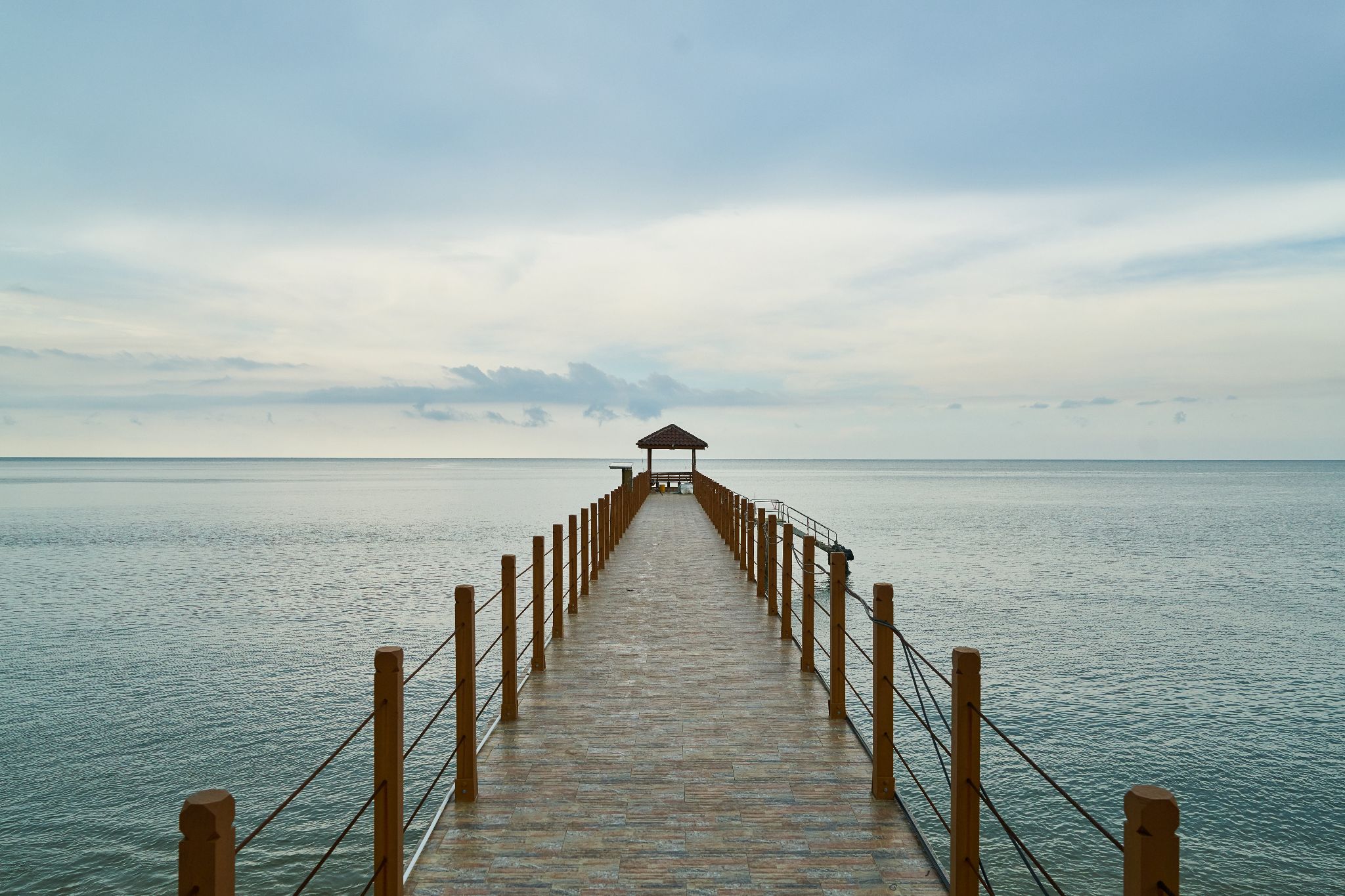Picking the right fence stain color can be challenging, especially when there are so many options. You want a fence that looks good with your home, fits your yard, and stands up to your local weather.
It’s a big choice that affects how your entire property looks.
I’m here to help you find the perfect fence stain color for your space. With the right color, your fence can highlight your home’s best features, complement your garden, and create the exact outdoor feel you want.
In this post, I’ll discuss the most popular fence stain colors, explain what factors matter most for your choice, and give tips for matching colors to different home styles. Let’s find your ideal fence color!
Why Does Color Matter for Fences?
The color of your fence does more than look nice. It sets the mood for your entire yard. A wall takes up a lot of visual space, making it one of the first things people notice when they see your home from the outside.
The right fence color can make your house stand out or help it blend with the surrounding nature. It can make a small yard feel bigger or create a cozy feeling in a large space.
Fence color also affects how other elements in your yard look. Your plants, patio furniture, and even your house paint all work together with your fence color to create a complete picture.
On the practical side, some colors hide dirt and wear better than others. Lighter colors might show stains more, while darker colors may fade faster in sunny areas.
Choosing a fence color is about both looks and function. It’s a choice that will affect your yard’s look for years.
Selecting the Best Stain for Your Fence Project
When you start looking for fence stains, the options can feel endless. The right choice depends on what you need most from your fence.
First, think about what you want your stain to do. Do you want to show off the wood grain? Pick a clear or semi-transparent stain. Do you want to hide flaws or old wood? A solid stain might work better.
The age of your fence matters, too. New wood needs a different preparation than older fences, and fresh wood might need time to dry before staining.
Look at the wood type of your fence. Cedar, pine, and pressure-treated woods each take stain differently, and some woods soak up more stain than others.
If you plan to do the work yourself, also consider your skill level. Some stains are more suited to DIY projects than others.
Test stains on a small, hidden part of your fence before painting the whole thing. Once applied, colors often look different.
Popular Fence Stain Color Options
These are the most common choices for homeowners when choosing a fence stain color. Each color group brings its look and feel to your yard.
1. Natural Wood Tones
Natural wood tones like honey, cedar, and oak highlight the wood’s beauty. These colors give your yard a warm, welcoming feel without trying too hard.
Pros: These colors never go out of style and work well with most house colors. They show off the natural wood grain patterns.
Best for: Homes with a country feel, traditional styles, or yards with lots of other natural elements. These colors work well with stone, brick, and most garden styles.
2. Dark Browns and Charcoals
Rich browns, deep espresso, and near-black tones create a strong border for your property.
Pros: Dark colors look clean and put together. They hide dirt and marks better than light colors.
Best for: Modern homes with simple lines or homes with light-colored siding. Dark fences work well as a backdrop for bright garden plants.
3. Gray and Silver Stains
From light, weathered gray to deeper slate tones, these colors offer a cool, calm feel.
Pros: Gray stains age well and don’t show wear as much as other colors. They create a gentle boundary that doesn’t grab too much attention.
Best for: Beach houses, modern homes, or any place where you want the fence to step back and let other features shine.
4. Bold Colors
Blues, greens, and even some muted reds can work well on fences for those willing to try something different.
Pros: These colors make your yard unique and can match your style better than standard options.
Best for: Fun, creative spaces where you want your fence to be part of the design, not just a border. Works well for garden fences or homes with strong color themes.
Fence Stain Color Trends for 2025
1. Color Trends Inspired by Nature
- Soft sage greens are gaining popularity for fences in garden-heavy yards
- Warm honey tones are making a comeback as people seek comfort in backyard spaces
- Muted clay and terra cotta colors are trending for southwest and Mediterranean homes
- Light oak and blonde wood tones are growing in demand for open, airy yard designs
- Subtle blue-gray shades mimic weathered driftwood for coastal properties.
2. Urban and Contemporary Stains
- Matte black continues strong as the top choice for modern home fences
- Charcoal gray is becoming the new “safe” choice for urban homes
- White and off-white making surprising returns for statement fencing
- Two-tone fence designs are growing popular (dark posts with lighter panels)
- Taupe and “greige” (gray-beige) tones are trending for versatile urban yards
Factors to Consider When Choosing a Fence Stain Color
Several key factors will help you make the best choice for your specific situation when picking a fence stain color.
1. Climate and Weather Conditions
Your local weather plays a big role in how your fence stain will look over time. Strong sunlight can fade darker colors faster, making them look washed out within a few years. In sunny spots, medium tones often hold their color better.
Wet areas with lots of rain or snow may cause some stains to wear away quicker. Water-resistant stains work better in these places. Humid climates can make some stains grow mold or mildew.
If you live somewhere damp, look for stains with mold fighters built in.
2. Style of Your Home
Your fence should look like it belongs to your house. For brick homes, warm brown tones often match well with the brick colors.
White or light-colored houses pair nicely with almost any fence color, but gray and taupe stains create a clean, classic look. Ranch-style houses match well with natural wood tones that give a rustic feel.
Modern homes with clean lines often look best with dark brown or black fences, which give them a sharp, defined edge.
3. Surrounding Landscape
Your yard’s plants and features should complement your fence color. Yards with lots of green plants often look good with warm brown fences that bring out the green tones.
If you have colorful flowers, a more neutral fence helps the flowers stand out. Rock gardens or yards with stone features pair well with gray stains that echo the stone colors.
Please take a look at your views; dark fences can make your yard feel smaller, while light colors can make the space feel bigger.
4. Maintenance and Durability
Different stain colors need different levels of care. Light colors show dirt and stains more easily and need more regular cleaning.
Very dark colors fade faster in the sun and might need more frequent touch-ups. Mid-tone browns and grays often strike the best balance between hiding dirt and lasting without fading.
Semi-transparent stains need redoing more often than solid colors, but solid colors can peel and may be harder to touch up.
Understanding Different Types of Fence Stains
Before choosing a color, it’s helpful to understand the different types of stains available. The type of stain affects how the color looks on your fence and how long it lasts.
1. Solid vs. Semi-Transparent Stains
| Feature | Solid Stains | Semi-Transparent Stains |
|---|---|---|
| Appearance | Looks like paint, which covers the wood grain completely | Shows wood grain and texture |
| Color Options | Wide range, more consistent color | Limited range; color varies with wood type |
| Hiding Power | Hides flaws, old stains, and damage | Shows wood character but also flaws |
| UV Protection | Better protection from sun damage | Less protection from UV rays |
| Lifespan | 3-5 years on horizontal surfaces | 2-3 years on horizontal surfaces |
| Maintenance | Can peel or chip over time | Fades gradually, easier to reapply |
| Best For | Older fences, changing colors completely | New wood, showing the natural beauty of wood |
| Application | Can be tricky to apply evenly | Often easier to apply without visible marks |
2. Oil-Based vs. Water-Based Stains
| Feature | Oil-Based Stains | Water-Based Stains |
|---|---|---|
| Drying Time | Slower (24+ hours) | Faster (2-3 hours) |
| Odor | Stronger smell | Milder smell |
| Clean-up | Needs mineral spirits | Soap and water |
| Penetration | Deeper into wood | More surface-level |
| Finish Look | Rich, deep color | Slightly lighter color |
| Durability | Good in high-moisture areas | Better fade resistance |
| Environmental Impact | Higher VOCs, stronger fumes | Lower VOCs, more eco-friendly |
| Cost | Generally less expensive | Generally more expensive |
| Weather Resistance | Better water resistance | Better UV resistance |
| Recoating | Harder to recoat | Easier to touch up |
The type of stain you choose will affect both the color of your fence and how often you’ll need to maintain it. For most homeowners, water-based stains offer the best combination of good looks and easy care.
The Cost of Fence Stain Colors: What to Expect?
1. Price Ranges for Different Stain Types
Basic fence stains start around $25-30 per gallon, while premium brands can cost $40-70 per gallon. Solid stains usually cost more than transparent ones, and specialty colors often have higher price tags than standard browns and grays.
Budget brands may work for small projects, but they frequently don’t last as long. One gallon typically covers about 200 square feet of fence, so measure your fence area carefully before buying.
2. Long-Term Value of Investing in High-Quality Stains
Higher-quality stains may cost more upfront, but often need fewer coats and last 1-3 years longer than budget options. Premium stains resist fading, peeling, and mold growth better.
This means less frequent restraining and lower labor costs over time. Quality stains also tend to look better throughout their life, keeping your yard looking good. The extra $10-20 per gallon often pays for itself within the first year.
Conclusion
Finding the perfect fence stain color might seem like a small detail, but it makes a big difference in how your yard looks and feels. The right color ties your outdoor space together and can make your home stand out for all the right reasons.
Remember to consider your local weather, how the color matches your home, and how much upkeep you’re willing to do. Test colors on a small section before painting the whole fence.
Whether you go with a classic wood tone, a modern dark shade, or something more unique, your fence color is a choice you’ll see every day.
Take your time with this decision. Your future self will thank you when you pull into your driveway and smile at what you see.

















One Comment
pin up azerbaycan: pin up azerbaycan – pin up casino